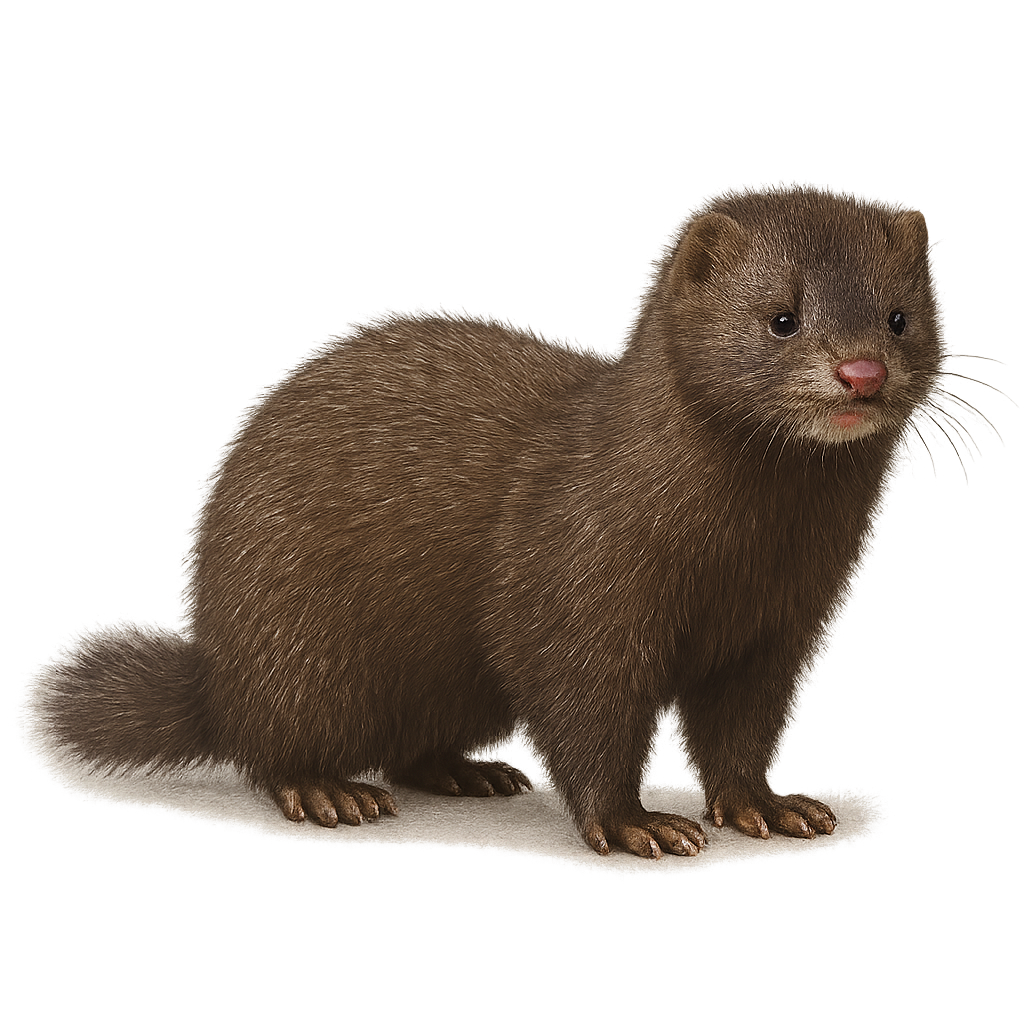Your wildlife photography guide.
Explore the american mink in detail, study its behavior, prepare your shots.
Where to observe and photograph the american mink in the wild
Learn where and when to spot the american mink in the wild, how to identify the species based on distinctive features, and what natural environments it inhabits. The WildlifePhotographer app offers tailored photography tips that reflect the american mink’s behavior, helping you capture better wildlife images. Explore the full species profile for key information including description, habitat, active periods, and approach techniques.
American Mink
Scientific name: Neovison vison

IUCN Status: Least Concern
Family: MUSTELIDAE
Group: Mammals
Sensitivity to human approach: Shy
Minimum approach distance: 10 m
Rut period: February to March
Gestation: 40-75 jours
Births: April to May
Habitat:
Rivers, lakes, marshes
Activity period :
Mainly active at night, generally discreet during the day.
Identification and description:
The American mink, Neovison vison, is a small carnivorous mammal belonging to the Mustelidae family. Native to North America, it has been introduced to various parts of the world for the fur industry. This mustelid is recognizable by its dense, glossy fur, typically dark brown, and its slender silhouette. It measures between 30 and 45 cm, excluding its tail, which can reach 25 cm. The mink is an excellent swimmer and is often found near water bodies like rivers, lakes, and marshes. It primarily feeds on fish, small mammals, birds, and amphibians. Although solitary and territorial, it may occasionally share its territory with other minks.
Recommended lens:
400 mm – adjust based on distance, desired framing (portrait or habitat), and approach conditions.
Photography tips:
To photograph the American mink, it's essential to remain discreet and patient. Use a telephoto lens of at least 400mm to capture detailed images without disturbing the animal. The best times to observe it are at dawn or dusk when it is most active. Look for tracks near water bodies and be prepared to wait for extended periods. A tripod can be useful to stabilize your camera, especially in low-light conditions. Ensure you respect the safety distance to avoid stressing the animal.
The WildlifePhotographer App is coming soon!
Be the first to explore the best nature spots, track rutting seasons, log your observations, and observe more wildlife.
Already 1 431 wildlife lovers subscribed worldwide

